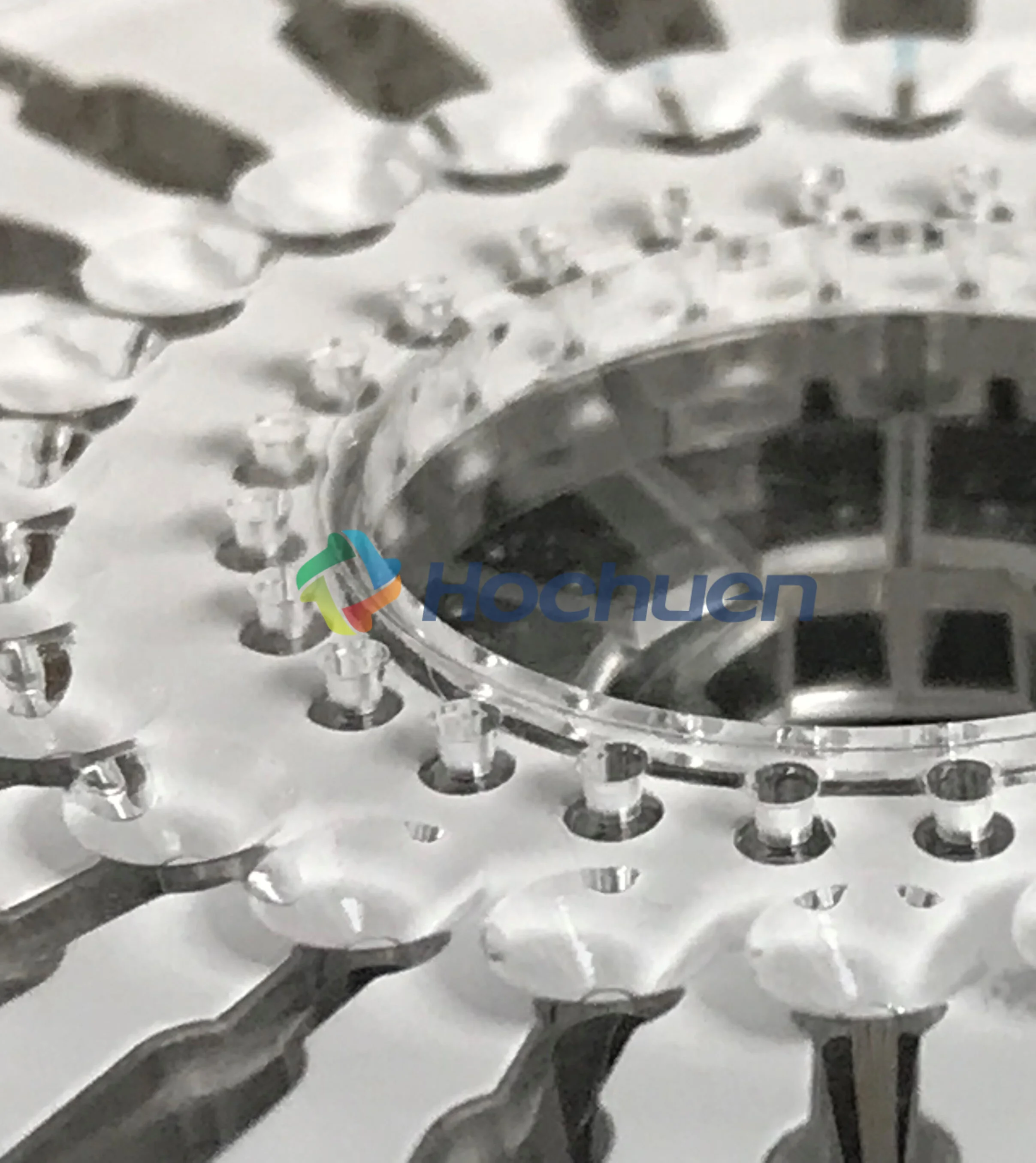state of art E-wetting Technology | Contact Us | Hochuen
Hochuen excels at techonologies such as e-wetting, lamination, injection molding, microfluidic cartridges manufacturing etc. Contact us today to get more info.
Electrowetting or E-wetting– New Imaging Technology
Electrowetting technology makes it possible to gain wetting displays that can reduce the usage of energy. Hochuen is using E-wetting technology to deliver the best reflective displays.
Body:
E-wetting is the process of using electric voltage to change and customize the forms and shapes of an interface between water and oil. Well, instead of the water, it can be any polar liquid that is transparent. Before channeling any electricity, the water and oil interface stays different than when channeling it. In this condition, the oil stays in-between the water and a hydrophobic surface. It remains flat and insulating the electrode coating. Thus, the oil creates colored pixels. The point to be noted is that the oil here is also colored.
However, when we pass voltage between the water and electrode (e-wetting), the pixels changes and turns a bit transparent. It happens because of the changing of tension between the water and oil, resulting in the former shifting the latter. The oil contracts and turns into tiny droplets. As a result, some optical switches are created. If you place a white surface under them, you can get a white pixel. Since it is using a reflecting surface to create the pixels, it is called a reflective display. That is the basic of e-wetting.
Wetting and E-wetting
Before knowing e-wetting properly, you should understand what wetting means. Wetting is the capability of any liquid to form an interface or connection with any surface. The surface here must be solid. Meanwhile, e-wetting is the method of changing the tension between a water and a colored oil and also changing their interface shape. It uses electrical voltage to perform that task. It is a microfluidic technology. This process creates reflecting displays that can save energy to a high amount. As a result, in various fields, e-wettingand wetting displays are a highly essential matter.
Where Do We Need Wetting Displays?
The reflective displays created from e-wetting technology are so necessary and beneficial in some fields. When creating digital displays, people use this technology to increase the resolution of them. Since the e-wetting displays can make both colored and white pixels at a sheer speed, it is excellent for creating colored screens. It can deliver 100 images per second, which is enough to play video content without any issue. In fact, some displays don’t even need that much resolution.
The low-pixeled videos, especially the videos we see on TV, only need 25 images per second. That is not the end. The videos become even clearer as the reflectivity of these wetting displays is so much. The contrasts of the displays also help here. Keep in mind that wetting papers are really bright, far brighter than LCDs.
Hochuen and Their Machinery
Thinking about all the advantages that e-wetting and wetting displays bring, Hochuen has taken its steps. With a lot of effort and time, they created some of the best wetting display technology and prototypes. These technologies are fit for digital screens and TVdisplays. Their products are top-notch and of the highest demand. Not to mention, they have been certified by an authorized organization.
Their prime goal is to create machinery, medical instruments, wearables, disposables, technologies, prototypes, etc., for you. They also handle the packaging procedure.
As new technology is increasing, the demand for digital displays is also growing. Hence, wetting displays are an important matter nowadays. It can offer people videos with even higher resolution. They appear clearer and appealing to the eyes.
Hochuen is doing its part in meeting this growing demand. E-wetting technology is a part of their study. They are focusing on e-wetting more because it provides a brighter display than other e-paper techs.
Technical Introduction:
Adhesive bonding is a flexible method to make a channel or even multiple layer structures with connected channel network.
Advantages:
The bonding process requires no intermediate medium High bonding strength The chip has good light transmittance
Weakness:
Alcohol or grease intolerance
Application:
Chip bonding
Pressure sensitive adhesive (PSA) bonding is commonly used to integrate two or more layers of plastic or other materials together. PSA can also be used to seal a microchannel layer. PSA can be die cut or laser cut with high precision.
Advantages: The adhesive bonding process is relatively simple and easy to implement. Some adhesive is PCR compatible.
Limitation: Alcohol or solvent intolerance. The PSA bonding method may not work for some applications which are sensitive to adhesive since a more or less amount of adhesive can be exposed to test solutions in use.

